I. Midnight Special
At the stroke of the midnight hour, when the world slept, Sunita Yadav awoke to a levitating alien.
She watched, petrified, as it hovered a foot above the ground just behind her home. Standing over 4ft tall, with grey skin and big, black eyes, it proceeded from the Yadavs' backyard toward their front door before - as her son Hitesh remembers - it "just vanished".
In the 15 years since, the humanoid has made numerous other appearances around the Western Command Hospital in Panchkula, some 10 km away from Chandigarh.
"It's now a mascot. Residents in the area believe it's lucky to spot it," says Hitesh, 20, now a tech student living in Gurgaon.
In their sketch, the alien looks like a swarthy dwarf. But Hitesh remains convinced that what he saw was an extraterrestrial. And he spends much of his free time trying to prove it.
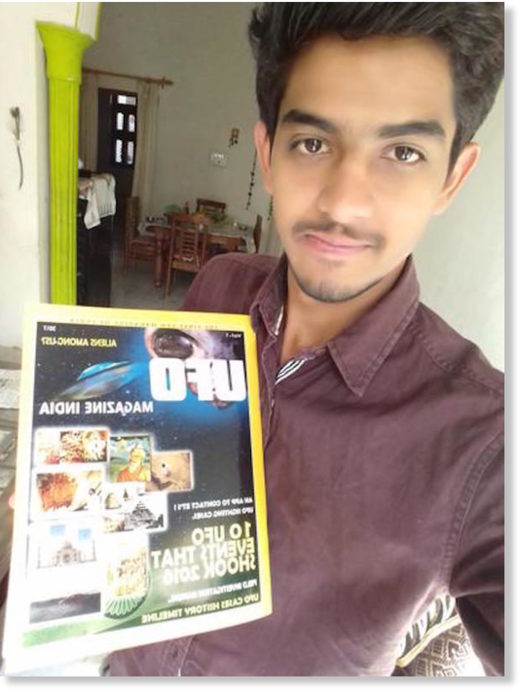
"Disclosure has grown to 200 members since it was set up in January 2016, including 22 from the US and UK," he says. The website has a form where people can report their sightings in detail.
This form has been filled four times. "But our investigators hear many stories from locals on the ground," he stresses.
"I'm currently researching an alien abductee case in Chhattisgarh," Hitesh says. "I don't care what people think, because my parents and sister are accepting. But my relatives don't know what I do. If they did, they'd surely call me crazy."
II. Arrival
In the inaugural March issue of UFO Magazine India, columnist Ramkrishan Vaishnav deconstructs the Drake equation proposed by American astrophysicist Frank Drake, a mathematical formula used to estimate the number of detectable extraterrestrials (ETs) in the Milky Way.
"I'm a UFOlogist because I'm a scientist. Even the Indian military has reported sightings," says the 27-year-old entrepreneur from Nagaur, Rajasthan. "We know little about what lies beyond our own solar system. Why dismiss possibilities altogether?"
In his teens (and with The X-Files etched in his psyche), Vaishnav signed up to help create 3D maps for NASA's moon missions, analyse asteroid samples for The Planetary Society, and study radio data for the SETI@Home project, the UC Berkeley offshoot of SETI or Search for Extraterrestrial Intelligence Institute.
But his turning point was March 2008. Just two months after he'd set up TOP (The Other Planet) Research Group to investigate UFO sightings, Vaishnav heard of a sighting in Banswara village, where eight locals reported seeing an unfamiliar craft in the afternoon sky.
Six days later, Vaishnav was there. "The villagers described the UFO as a hat-shaped object with a bright underlight. We also found an odd-shaped stone that looked like nothing else in the radius we scanned. Image evidence of this encounter is the best you'll find in India," he says.
What's really in the sky over your head? Take a look at some of the informed opinions
Vaishnav is now founder of ExpeTechnologies and Shakti Innovative Products. He has filed four patents: for a solar satellite plant, non-conventional wireless mobile charging, touchscreen technology, and a next-gen user-interface system.
Tech research is his bread and butter, but ufology remains his Danish pastry.
"I'm intrigued by why many sightings are from Rajasthan and West Bengal. And the Kongka Pass in Ladakh," he muses. "It's also a remote military base, so you never know.
III. Signs
On October 26, 2014, at 4.55 am, a man looks out of the window in Thane and sees a horizontal row of red, yellow and green lights that blink but remain stationary for several minutes, then disappear. He records footage on his cellphone.
On November 7, 2014, a fast-moving object is captured hovering over Bengaluru, framed against a full moon. It stays there for nearly an hour, then disappears as suddenly as it appeared.
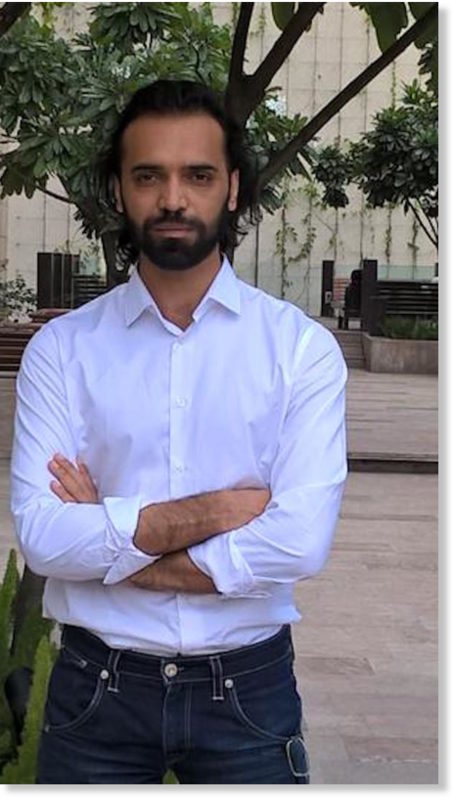
Ramanathan is a senior technical engineer with a Chennai-based IT firm who blogs as alienseeker on Wordpress. In 2012, he became India's first 'certified UFO investigator' under MUFON, the largest non-profit investigating UFOs, with 3,000 members worldwide.
"MUFON employs scientific methods, not conjecture," says the 36-year-old. "You have to renew your membership and purchase manuals every year, then take an exam and score at least 80% to become a qualified investigator."
The test is a mix of objective and multiple choice questions, spanning subjects such as how to interact with eyewitnesses and the plan of action if a witness claims to have an encounter. "They present hypothetical situations to gauge if you'd make for a good investigator," Ramanathan explains. "All tests are examined at the MUFON headquarters in Newport Beach, California. If you make the cut, you're given an ID and certificate proclaiming you're licensed."
But it's not all love and sunshine. "Of every 100 cases, about 97 end up being fake — optical illusions, doctored images, or everyday objects mistakenly identified as otherwise," he admits. "This teaches you discernment."
Now an independent ufologist after working with MUFON for two years, Ramanathan will visit Aniketty, near Coimbatore, to study a spurt of unexplained objects reported since 2011.
"My family always supported me," he replies, when asked what people make of his 'other job'. "Some collegians called me Jaadu for devoting so much time to ufology. But who cares about acquaintances?"
IV. The Fifth Element
At 8.28 p.m. on December 15, 1987, six-year-old Kamal Pant stood on the terrace of his Dehradun home and observed a large, red light soaring directly overhead.
"No, it wasn't a plane, helicopter, or prank," he says, before you've asked the question. "Whatever it was stayed there a while and made no sound."
The incident would spur the self-professed 'sky watcher' and fan of Star Trek, The X-Files, mythology, and conspiracy theories to scour the internet for all things UFO and ET. Then in 2014, he photographed and filmed what he claims is "a mothership taking off from and landing on the moon." From thereon, Pant goes full steam ahead.
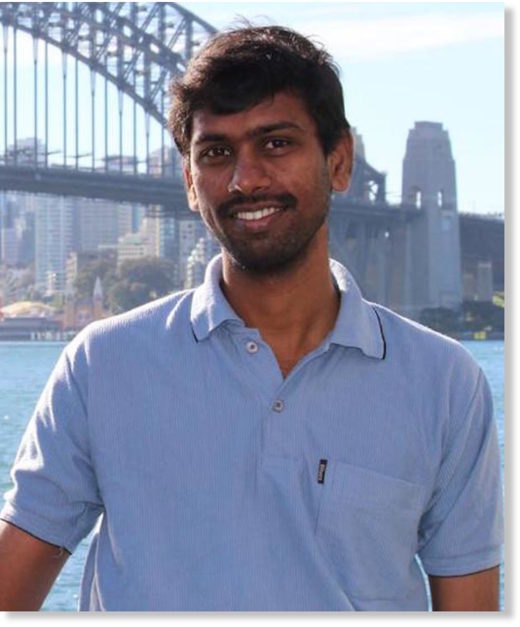
"Do you have this email, or a snapshot of it?"
"No. My system got corrupt a day later, and some of my videos vanished. My computer had been tampered with."
Pant, a computer science lecturer at a private university in Dehradun, is what naysayers would call a tinfoil hatter (conspiracy theorist). He believes NASA and the US are involved in a cover-up, and that alien technology was obtained from the Roswell crash. He also claims to have CE-5 communication with ETs - that is, telepathic communication between himself and aliens.
"My mother and wife have seen everything and know I'm not lying," Pant says. "Distant relatives call me sanki (madcap), but it doesn't affect me."
The 36-year-old father of a toddler, who works with both Disclosure and TOP Research Group, is currently looking into sightings in Ranichauri village, Tehri-Garhwal district. "The events are so common, locals call the beings pariyaan (fairies). They also tell their children not to step out after dark lest they be taken away."
His colleagues at the university, Pant says, have no qualms with his interests and theories. And even if they did, he wouldn't break into a sweat.
"Every time I look at the sky, I feel like something, and someone, wants to communicate with me," he shares. "No one can take that away from me."
V. 2001: A Space Odyssey
Pushkar Vaidya likes his coffee cold and his feuds hot.
From 2007 to 2015, the astrobiologist was embroiled in a scientific tug of war with astrophysicist and author Jayant Narlikar. The bone of contention: Narlikar's hypotheses supporting panspermia - the theory that life exists throughout the universe and is distributed through asteroids, comets, and meteoroids. In short: life on earth may have come from external sources.
A truce was eventually called when Vaidya founded the Indian Astrobiology Research Centre (IARC) in Mumbai, for which Narlikar now serves as mentor.
"I'm open to the possibility of ET microbial or intelligent life. I just didn't think there was enough evidence," says Vaidya. "If anything, panspermia research is one of IARC's focus areas."
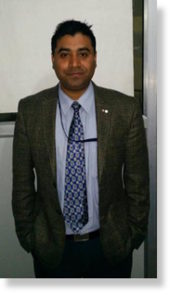
Vaidya is no ufologist. The 36-year-old straddles the no-man's land between belief and skepticism. His bond with Arthur C. Clarke, one of the world's most prolific sci-fi authors, has much to do with it.
"When I was 16 and studying in Sri Lanka, I wrote In Search of Aliens. Arthur Clarke lived in Colombo and as an ardent fan, I went to his home because I wanted him to pen the foreword to my book," he laughs. "He didn't write it, but that kicked off a two-year association."
Vaidya credits Clarke for bringing wonderment and adventure to science. "Science is now increasingly taking on a tone of finality, especially when it comes to the search for alien life," he feels.
But he also throws the gauntlet to ufologists.
"The UFO phenomenon is real from a research perspective. The problem is how people go about it. If you look at everything as alien, you're better calling yourself a flying saucer investigator," he reasons.
A long discussion touches upon everything from cattle mutilations to the Kardashev Scale, which hypothesises that the most intelligent civilisations can harness energies on a galactic - even cosmic - scale to partake in astral travel.
There's a lot Pushkar Vaidya believes in. What he's waiting for is substantiation.
"As they say in The X-Files: 'I wanted to believe, but the tools have been taken away'," he smiles.
Want to review the evidence? Here's a reported UFO sighting from Chennai
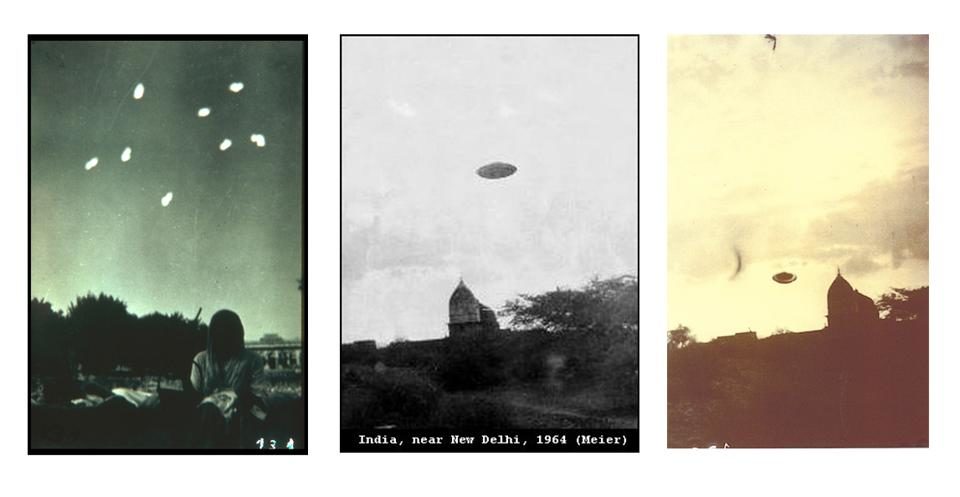



Reader Comments
What I always ask myself is why do UFOs need lights in the first place? I don't have an answer to that